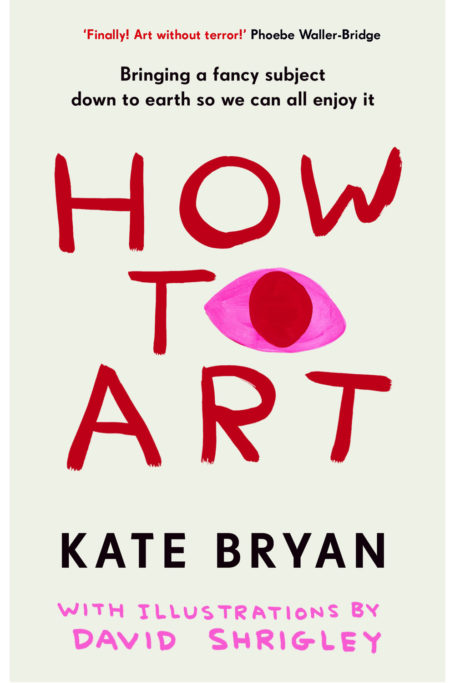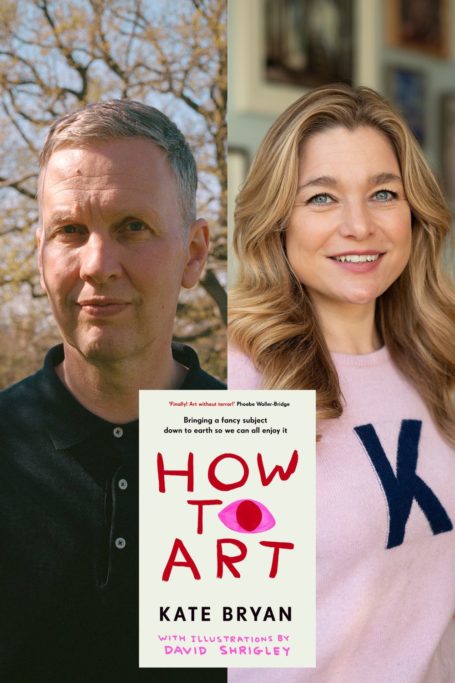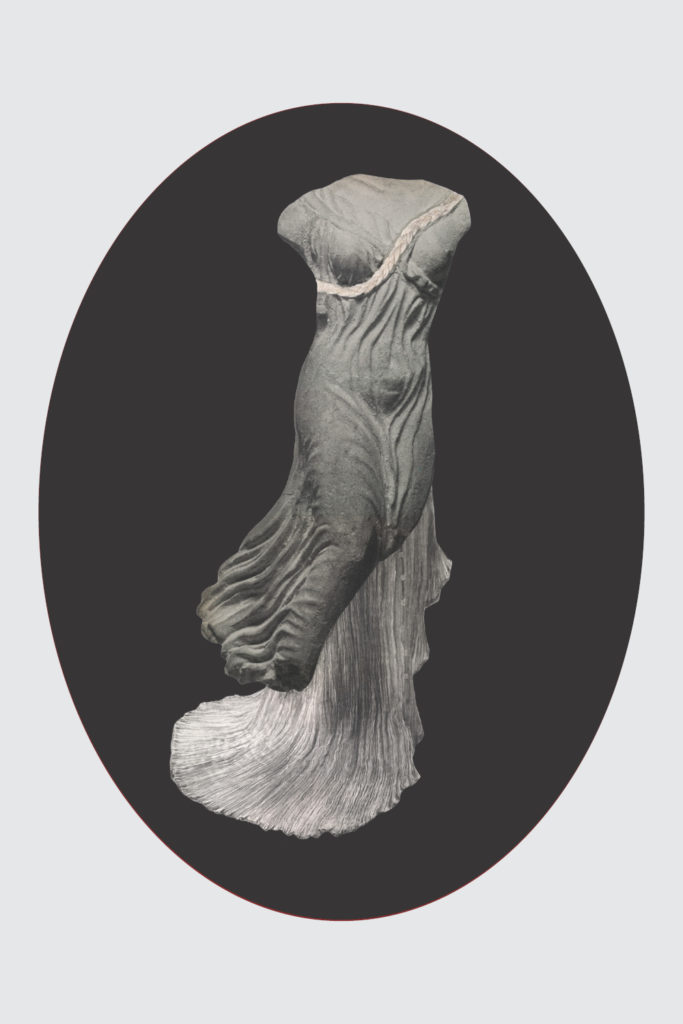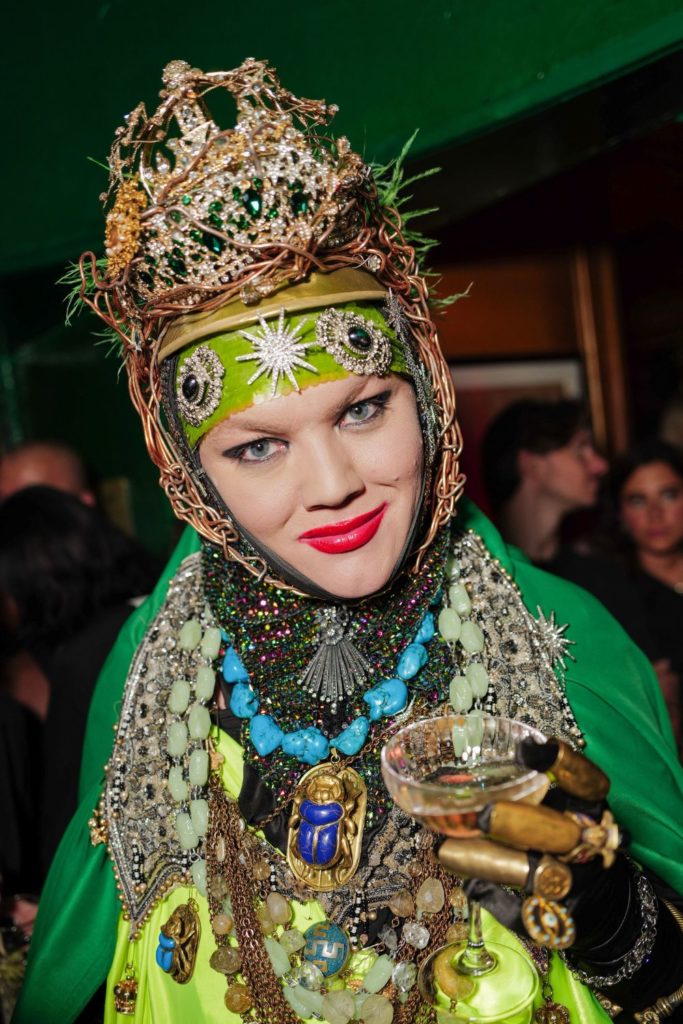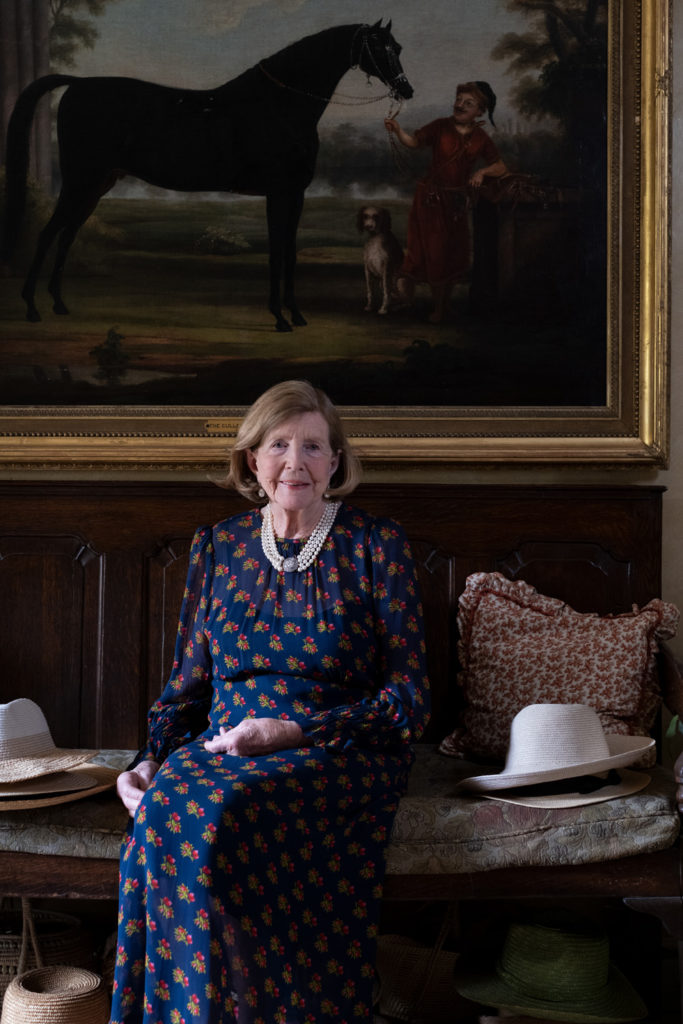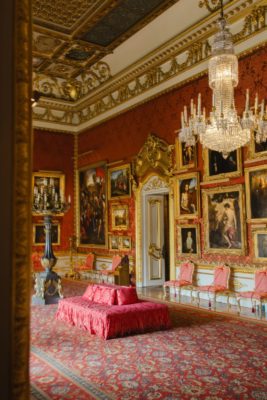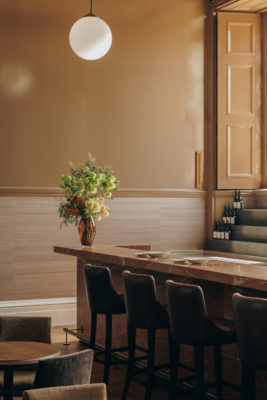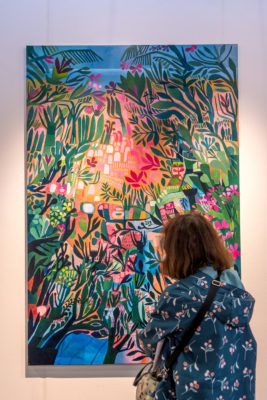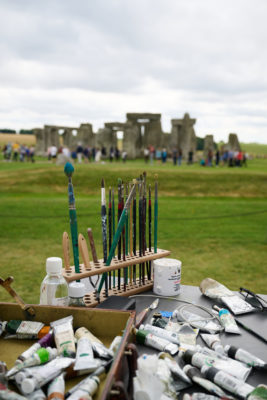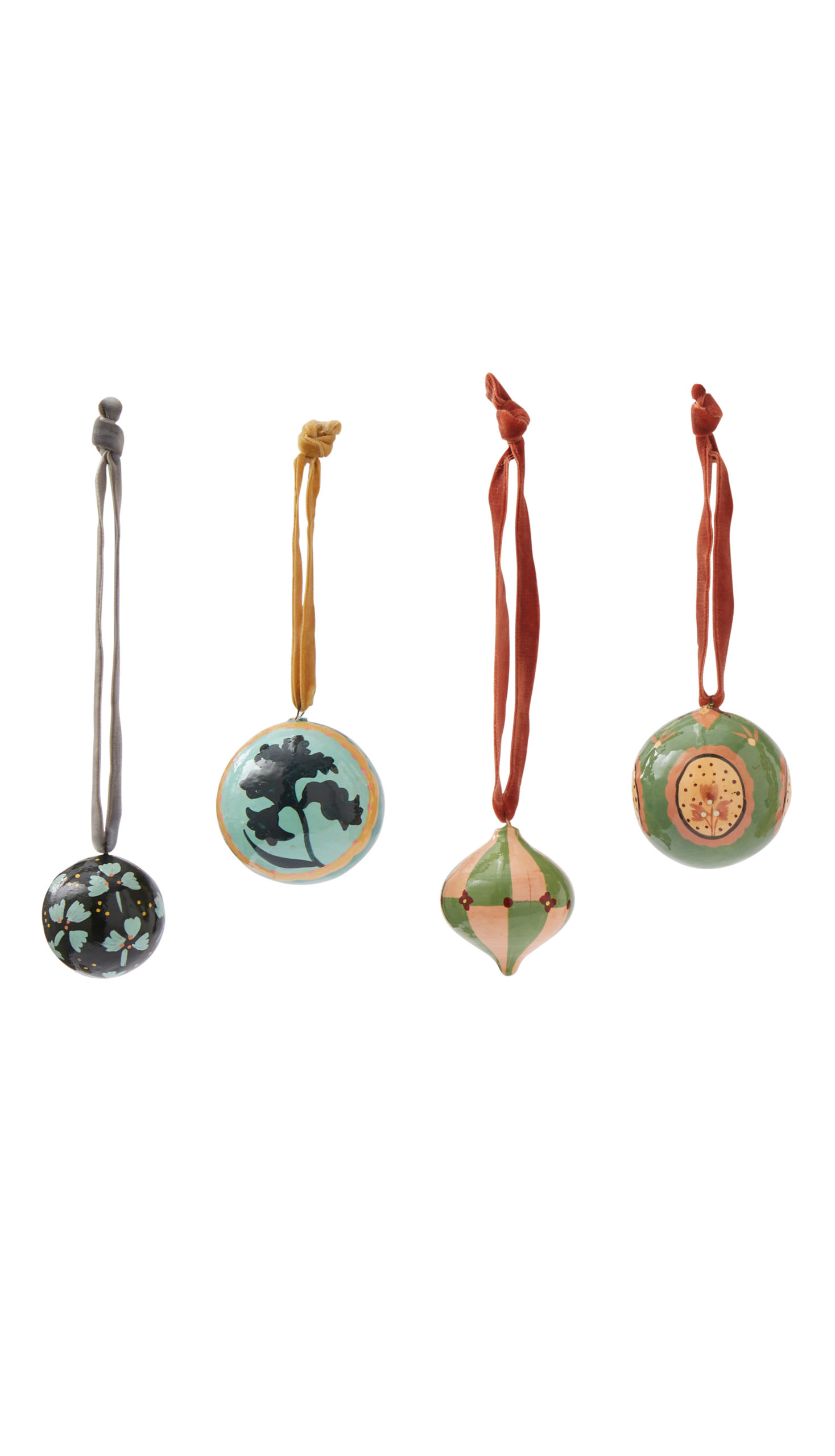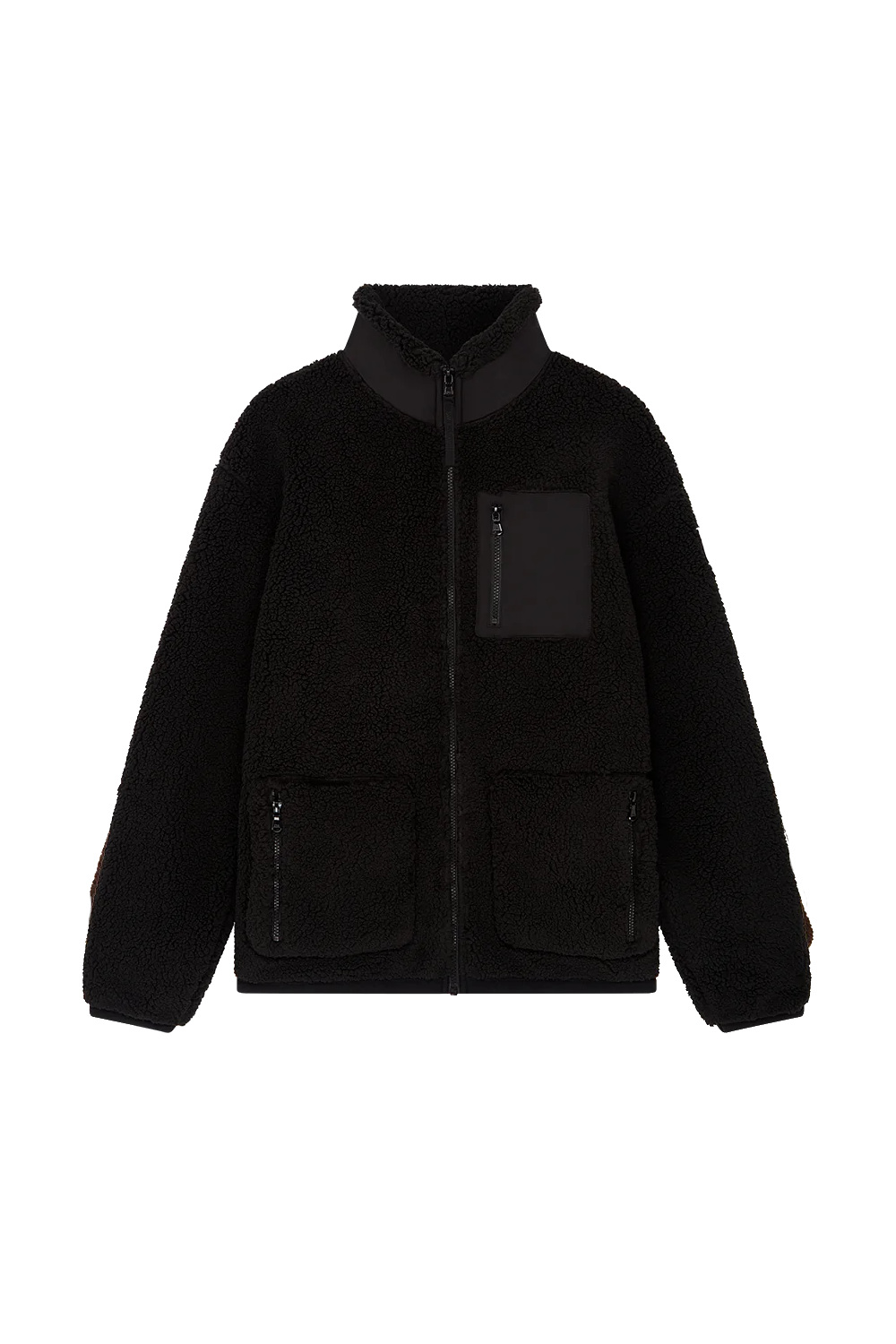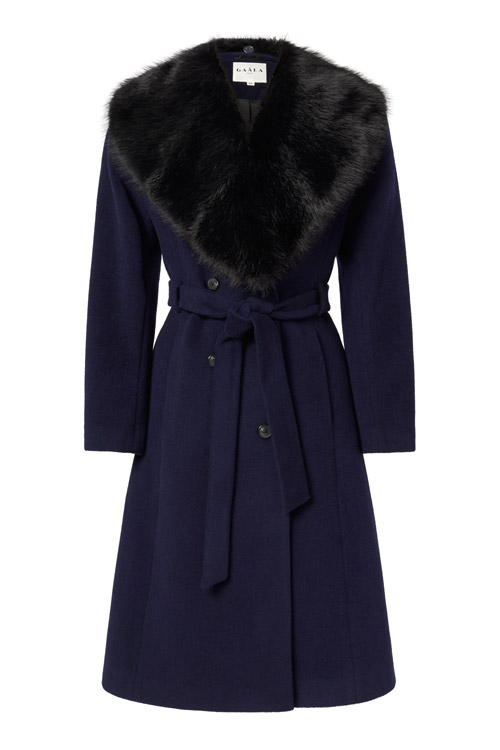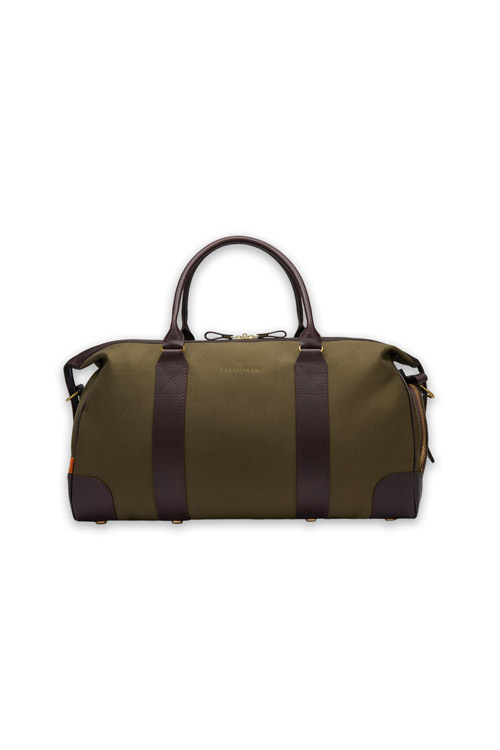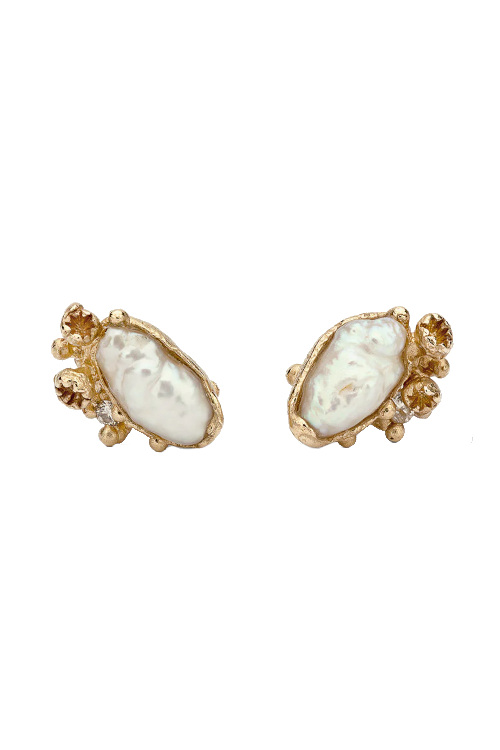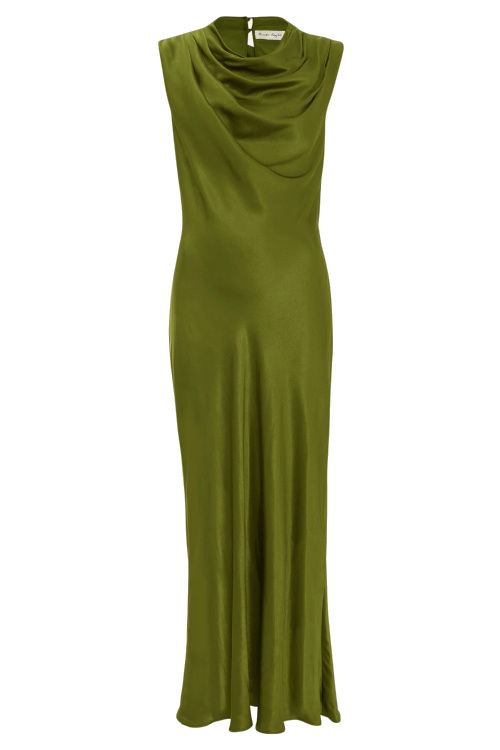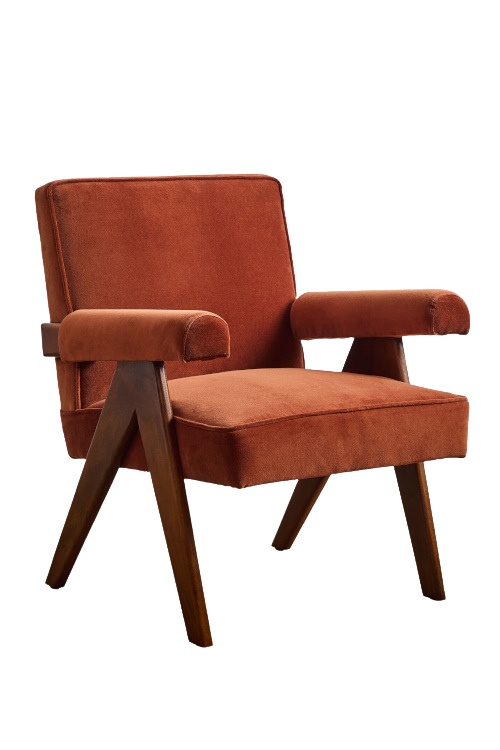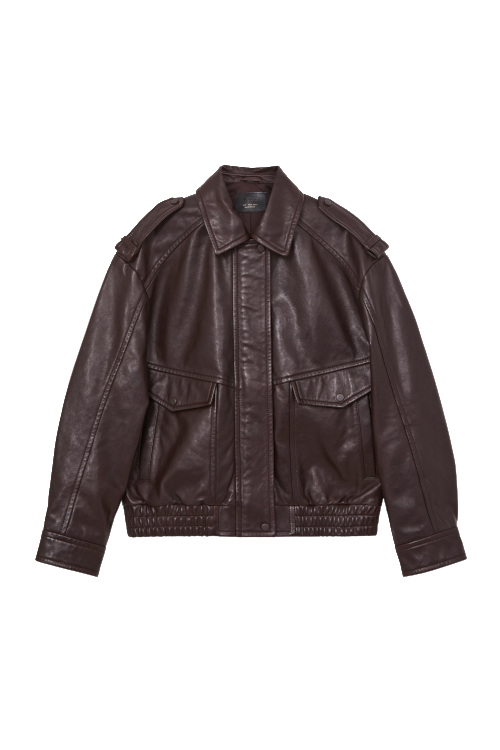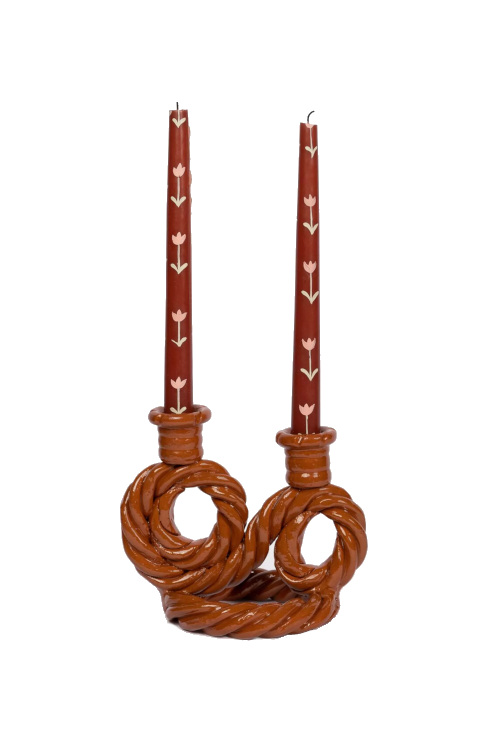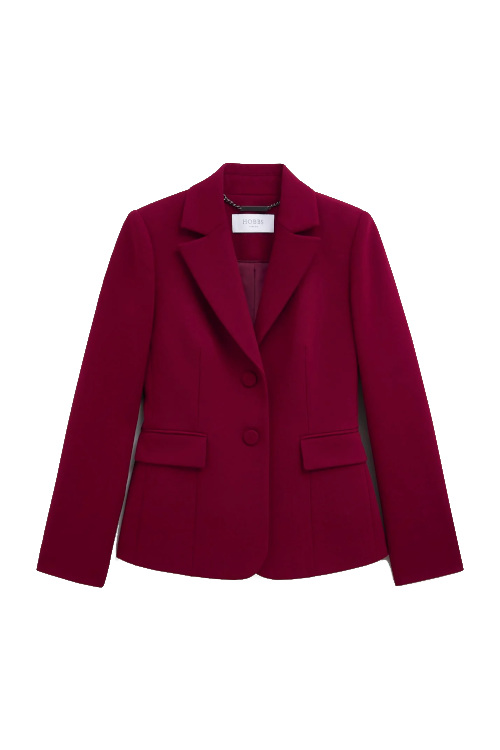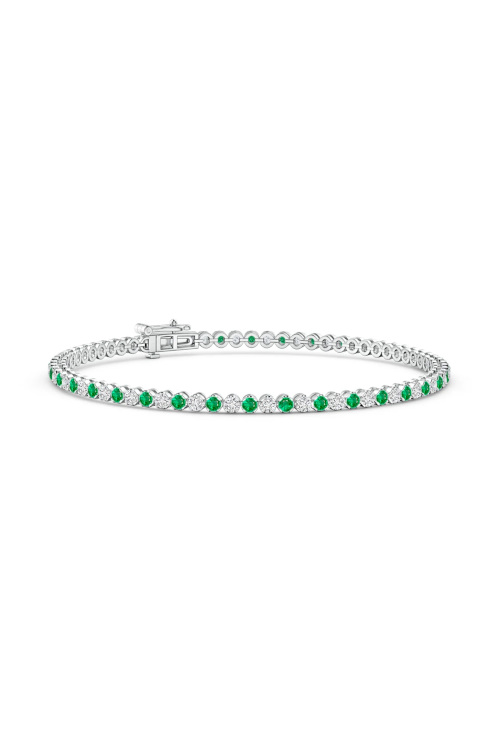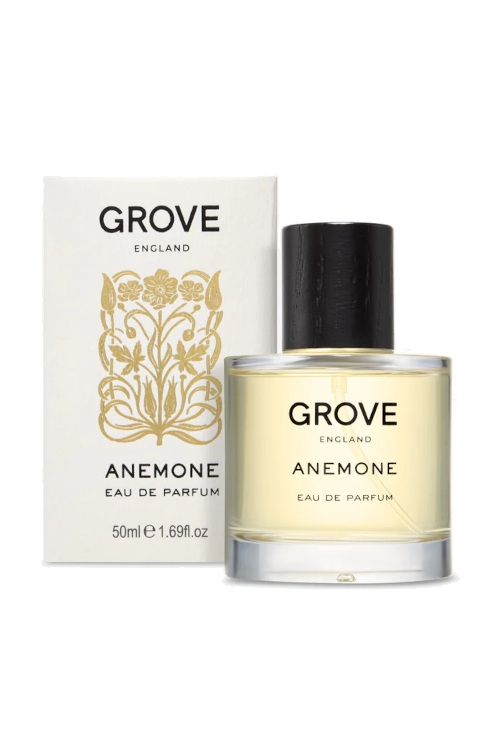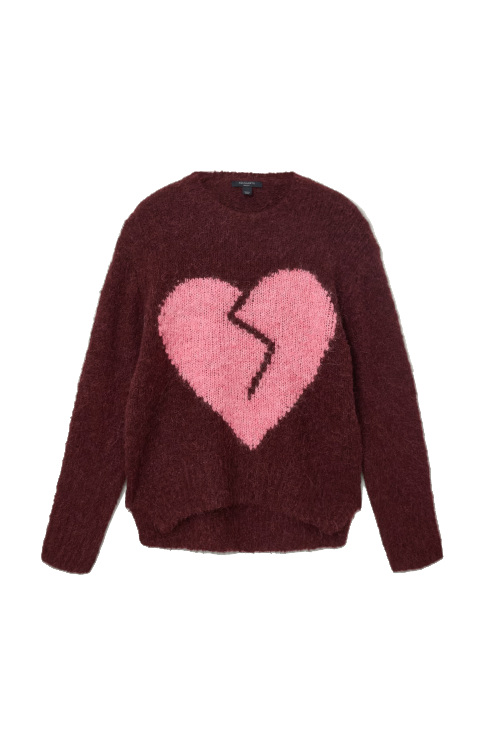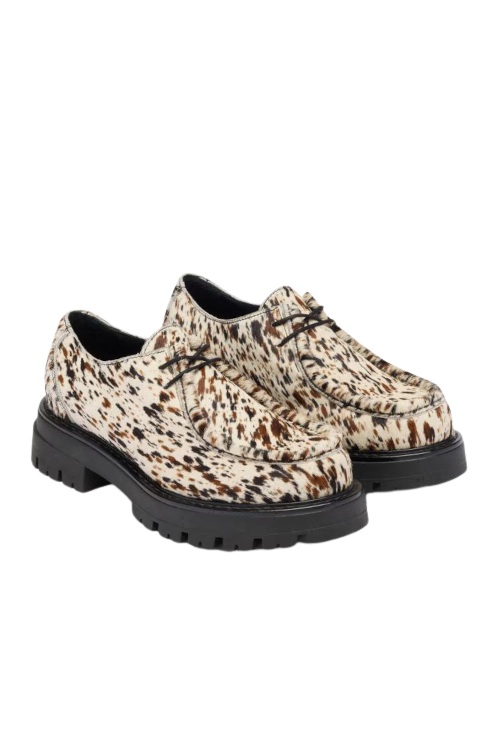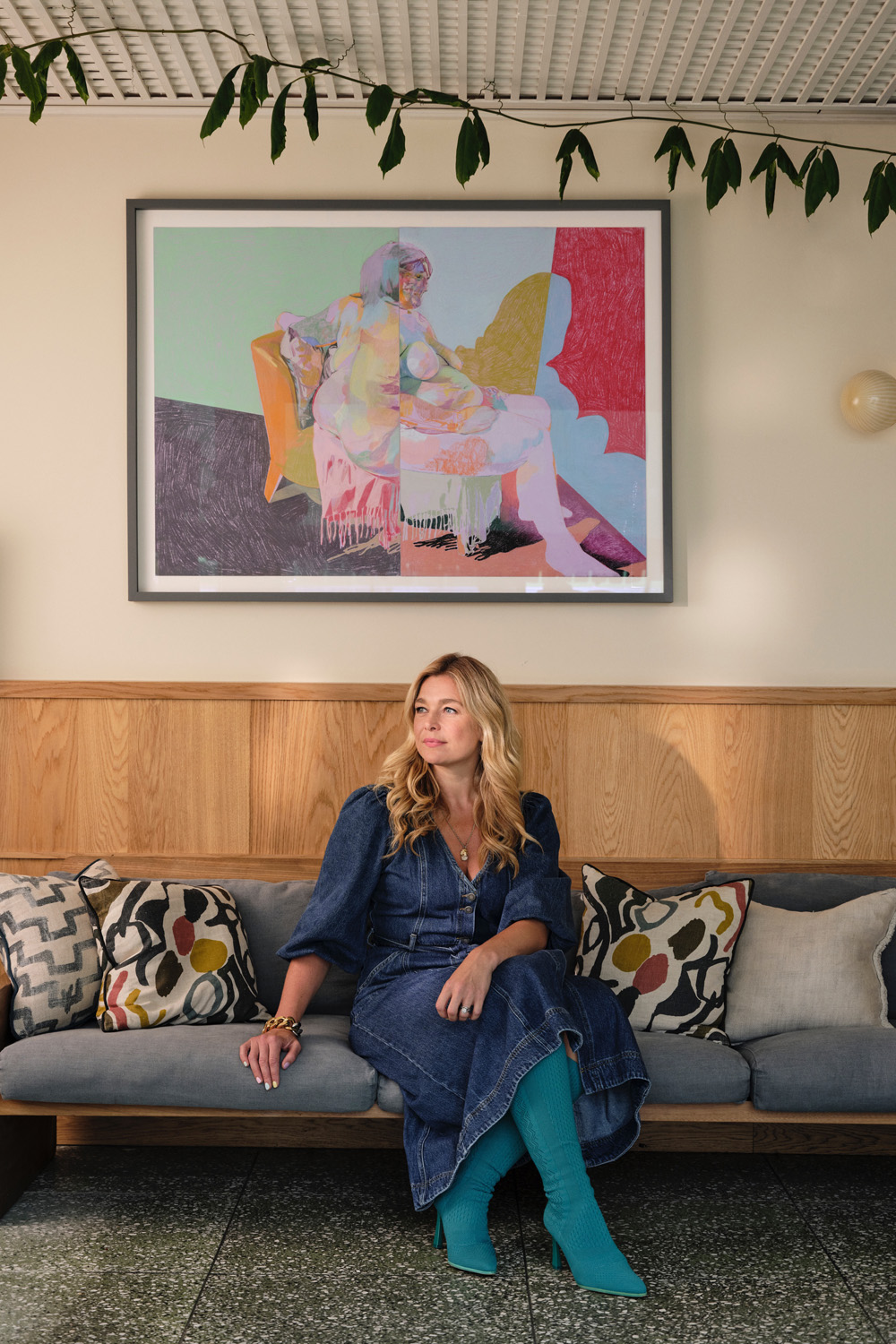
Kate Bryan: We Need To Free Ourselves From Art’s Rules
By
5 months ago
How To Art by Kate Bryan and David Shrigley will be published by Penguin on 18 September 2025
Curator, art historian and broadcaster Kate Bryan wants everyone to fall back in love with art. Why are we all so scared of it? Seeing it, talking about it, buying it? ‘I don’t really know how that happened, because if there’s one thing I know about every single person on the planet, in every single country, no matter what language they speak, it’s that they made art as a child,’ Kate tells C&TH. ‘Our ancestors made art in caves 40,000 years ago. Opera is snobby, but they weren’t doing opera in caves, and children are not doing opera in nurseries. Art should not have the same barrier to access.’
This is the subject of Kate’s upcoming book, How To Art, which she has had a deep urge to write for many years – but it all came together on a phone call with her friend, internationally treasured artist David Shrigley. With Shrigley’s illustrations bringing a dash of ‘verve, wit and humour’ to Kate’s words, we have the finished product, set to hit the shelves on 18 September. A couple of days later, the duo will take to the stage as part of the inaugural Chelsea Arts Festival to talk all things How To Art.
We sat down with Kate to hear all about the book, plus what we can expect at her talk with David in September.
MORE: Chelsea Arts Festival: 8 Events To Book Tickets For Now

(© Gina Soden)
Interview: Kate Bryan On How To Art
Tell me about How To Art.
How To Art is my passion project; it’s the book I knew I was going to have to write. It is designed for everybody. I want it to say, ‘you don’t have to have an art history degree to have a relationship with art’.
I hear people say things like, ‘I really like David Hockney’, or ‘I love Tracy Emin’ all the time, but then they qualify by saying: ‘but I don’t know anything about art’. No one would ever say, ‘I don’t know anything about music, but I love Coldplay’! But there’s an art anxiety that people have: about going to galleries and museums and having the correct response, not knowing how to talk about art, being completely confused about how to buy art, how art is priced.
Of course, that is all purposefully opaque; people have been keeping that at arms length from the general population on purpose for decades. Having worked in the art world for 20 years now, and having not come from a privileged background – having to work it all out once I got there – I really felt like it was time for someone to say, ‘this is actually not that complicated’. You already know everything you need to know to have a relationship with art, just as you can decide if you like music or food or movies. You can do exactly the same thing with art. It’s as simple as food: you don’t have to like it all – and it’s perfectly acceptable, logical, even to be encouraged not to like all art.
How To Art is a complete demystification. It’s supposed to be funny and a bit irreverent – but a love letter to art, too. I love art, and I want everyone to come to it. But I don’t want everyone to feel like it’s too elitist and snobby for them.
So that’s the book in a nutshell. Basically, I feel like if I’m solely placed in the art history section in bookshops, I’ve failed. It’s really supposed to blow art outside of the art world.
What will we find inside?
How To Art has a multi-pronged approach. I start by exploring what is art, where to find it, how to talk about art that you like, how to talk about art you don’t like, how to have a relationship with art at home (with books, movies, podcasts, magazines – that stuff), and how to not hate the Mona Lisa. That’s in section two, where I pick three very famous artworks – The Sistine Chapel, the Mona Lisa and The Sunflowers – to help alleviate specific anxieties about these works.
Section three is about why we should all be making art, and why it’s really good for us to make art, even as ‘amateurs’, if you want to use that word. Part four is how to buy art, demystifying the way everything is priced and sold, where you can buy art and how the whole thing works with a complete, clear and lucid explanation of it.
Part five is about how all of us can art, but some of us can be artists. There’s advice for professional artists from writing their artist statement to how to sell their artwork, how to get gallery representation… That’s also useful for non artists, because it’s about the way artists see and exist in the world, and what we can borrow from them.
The book is laced with David Shrigley’s amazing artwork, which is very accessible and full of verve, wit and humour; just really fabulous. It’s all supposed to be very comforting in a subject that, for some reason, got scary.
What’s your favourite section of How To Art?
Probably the bit I loved writing the most, which came out so easily and was so enjoyable, was describing the Sistine Chapel. Explaining how this is a benchmark of Western culture, but the viewing conditions are quite difficult: it’s very crowded, and you are constantly yelled at to be silent; it’s a place of worship yet an extreme tourist site, and those two things together make it a difficult place to manage. But it is just the most extraordinary artwork. I would love it if you had a shot at having a special experience with it.
Writing that was really fun – and getting to talk about why you should watch Good Will Hunting before you go and see the Sistine Chapel.
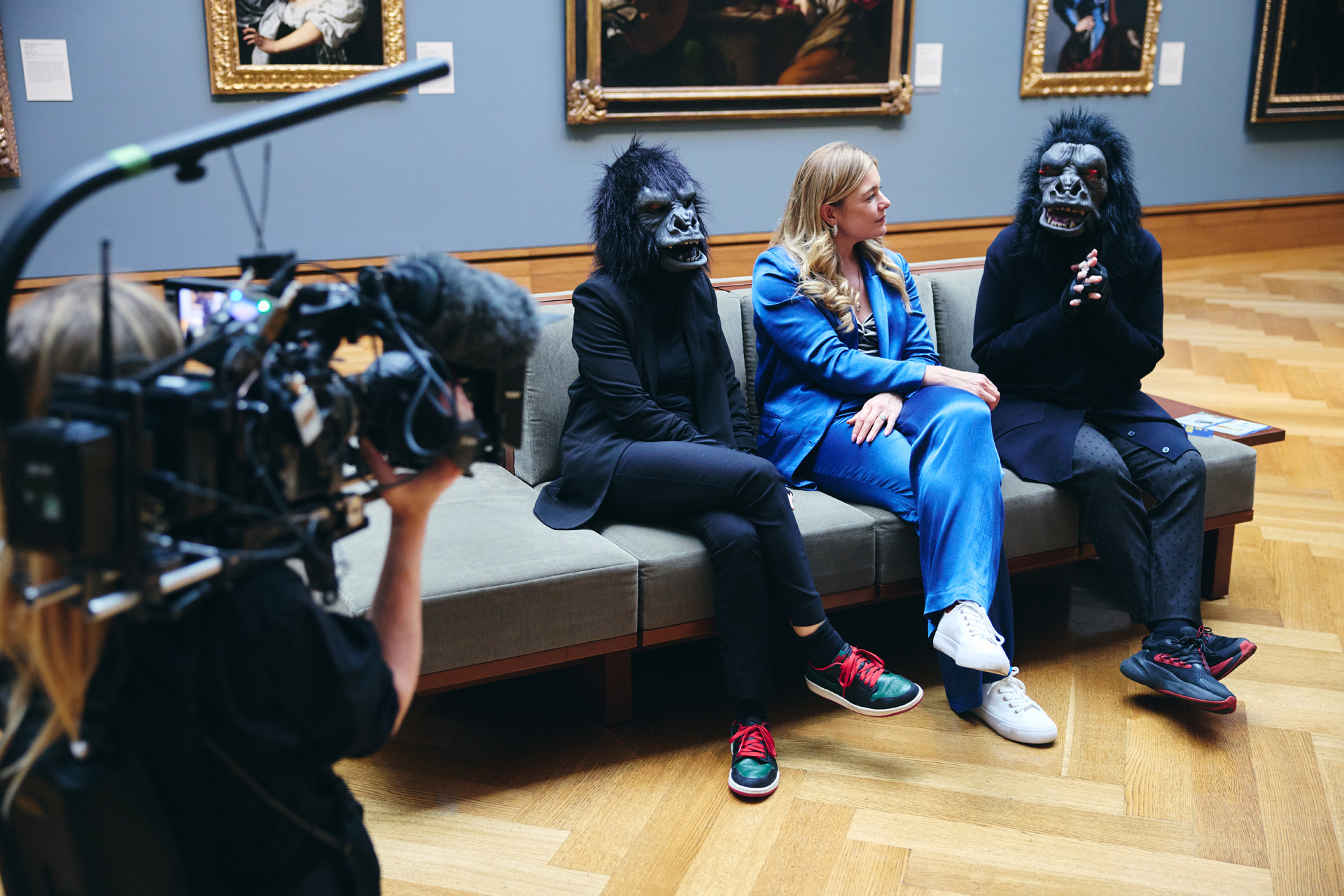
Kate in her Sky Arts episode, My Week With the Guerrilla Girls
How did the illustrations from David Shrigley come about?
I wanted to write this book, but I didn’t quite know what it was. It was definitely a really gentle, kind book introducing people to the art world, but I was really struggling with what it could be and why I should do it. I was a bit like, ‘Should I do this?’ I almost felt like I was breaking art world etiquette. And then I thought, ‘You know what? David Shrigley has done it.’ David Shrigley has made art that is completely accessible, that anybody can just get. He’s happy to sell it on greeting cards, he’s happy to do tea towels. It’s completely mainstream, but at the same time, he did the fourth plinth, was nominated for the Turner Prize, had a sell-out show at the Hayward Gallery, and is in the MoMA collection. David’s done both.
He’s a friend of mine, and I suddenly thought I could get him to do the cover, and maybe put some art in the book. A lot of David’s art is about the act of making art; he’s quite interested in the art world as a subject. That seemed like a perfect combination. In a way, he gave me the courage to do the book.
I called him randomly one morning. I was just sitting on my bed, and I said, ‘David, would you ever, like, do a book with me? You know, designed to really help people?’ And he was like, ‘Yeah, I would definitely do that. We should definitely do it.’ He was so sweet; he just got it instantly. David is really keen on art being a big tool for people to benefit their mental health, and children having access to art at school. He’s a campaigner for the wellbeing that art can bring, and How To Art falls into that camp, so he was really happy to do it for that reason, too.
What’s your favourite piece of Shrigley’s artwork in How To Art?
There are so many good ones! The one that immediately comes to mind when I’m talking about the book is an artwork called ‘There Are No Rules’. It’s beautifully painted, and I think it just sums up what I’m trying to say: it’s art, there are no rules, and we need to free ourselves from the rules.
Anything else you’re particularly excited for people to see in How To Art?
The thing that I’m excited about most is to get people out there. The people who have read the book so far, even those who are part of the art world, have been like, ‘Yeah, I should be buying more art!’. I’m quite excited to try and motivate people. It’s almost like there’s a really big desire, but there doesn’t seem to be a pathway. So I’m excited to see, hopefully, the people I have been able to reach, connect with, and that the book is useful to – that I might have given them a pathway, however small. If more people are engaging with art, it’s good for all of us, on whatever level that is. Whether it’s listening to podcasts or going and buying a painting or doing a painting class. Whatever it is, it’s good for all of us.
Lots of people know you for your work on Sky Arts, including Portrait and Landscape Artist of the Year. How did you know this was the right time to pursue the book?
It’s funny: the audience for Landscape and Portrait were a huge motivation for writing the book. I meet so many people during filming. We have a live audience for Portrait, and people come along to the Landscape locations and oftentimes they say things like, ‘Your program has helped me be able to talk about art’, or ‘Your program is so nice about art that it helped me start making art again for the first time since I was a kid’. I had so much real time engagement with the fans of those shows, from all walks of life, for whom maybe this is their first entrance point back into art again. Also, doing talks and meeting young artists – even older artists – who are completely baffled by the art world, was a huge motivator.
A few days after How To Art is published, both yourself and David Shrigley will host a talk at the inaugural Chelsea Arts Festival. What can we expect from the event?
Lots of laughter, because everything David says makes me laugh. He’s got such brilliant wit, but he’s also very profound and very poetic when he talks about art and how meaningful it is – but in a non-elitist way. He practices what he preaches; he lives this message about art being good for us. Sometimes we’ll be laughing, being really irreverent, mucking around, and then he’ll just say something like, ‘See, that’s the thing. There’s no such thing as good and bad art. There’s only the art that you like and the art that you don’t like.’ And I’ll stop in my tracks and be like, ‘Wow, right? Yeah, OK. Is it OK for me to agree with that? What do I think about that?’ He’s full of big penetrating existentialist art questions, but delivered with such warmth that you feel really happy exploring the terrain.
We’re really excited about Chelsea Arts Festival. It’s the only talk we’re doing that week with the two of us together. We want to keep it fresh, and David’s a very busy person, so we’re not going to do endless things together. But this one is going to be really special: How To Art will have been published a couple of days before, so we will get to digest everything that’s just happened in real time, on stage with everyone. And I can’t wait to hear what people want to ask David; people respond to his work in such a powerful way.
Anything else on the horizon you’re excited about?
I’ve made a new series called My Week With, where I spend a week with an artist. That’s already out, and it has been hugely well received, so my dream is that I can make some more of those. But let’s see: it’s all in process at the moment.
Really, one of the reasons for stepping back from Landscape was just to be able to do more work like How To Art and projects which engage with these big questions that I’ve been struggling with for a long time. How do you get more people to come to art? How do you get more people to buy art? That’s my focus now.
How To Art by Kate Bryan & David Shrigley
Published by Penguin 18 September 2025
Hardback, £16.99
Chelsea Arts Festival
How To Art with Kate Bryan and David Shrigley
1.30pm, 20 September 2025 at Cadogan Hall (5 Sloane Terrace, London SW1X 9DQ).
Tickets are priced between £16 and £32.50.

